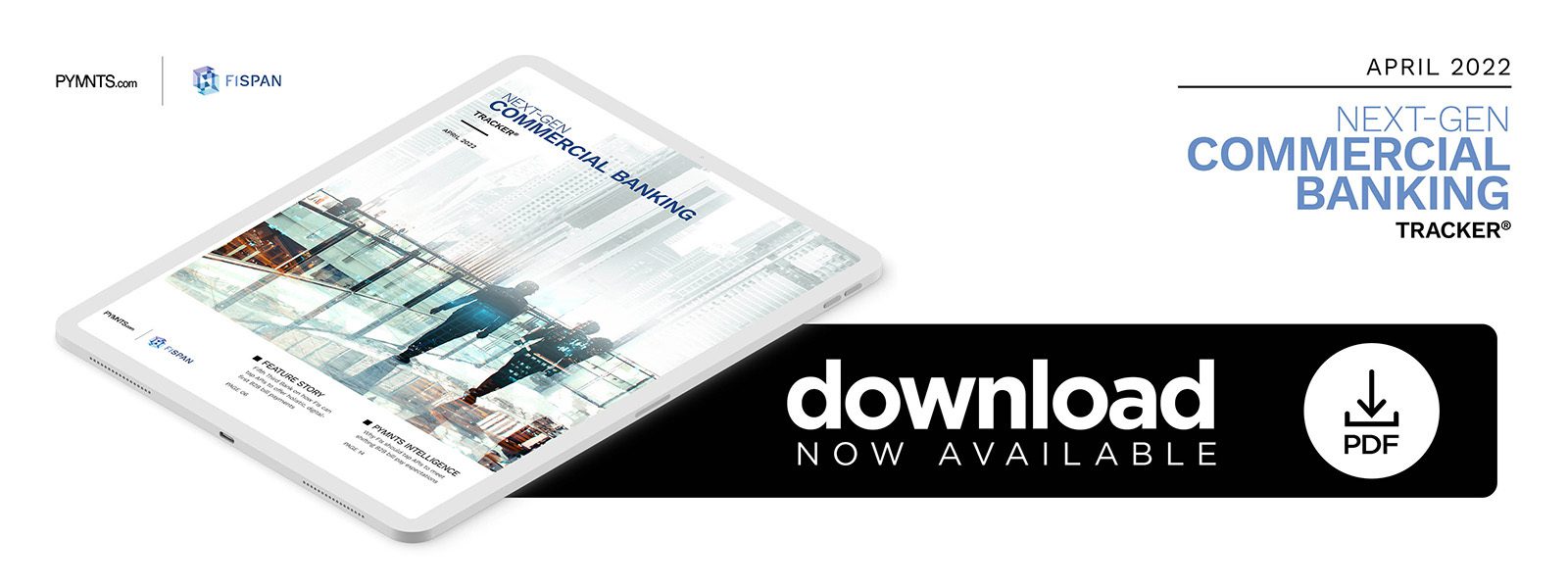Fifth Third Bank: APIs Help Businesses Replicate Their ‘Last, Best’ Consumer Payments Experience

As a growing number of businesses are drawn to the simplicity of an end-to-end bill pay experience, Fifth Third Bank’s Laura Listwan tells PYMNTS how APIs and other tech are not only being used to accommodate a range of diverse bill payment methods, but are also capturing business clients’ attention and loyalty.
Payments have swiftly become more digital during the past few years as consumers and businesses seek more convenient ways to conduct their financial activities.
Many companies are looking for solutions to help streamline their bill pay processes, especially as more of their industry partners and customers move to online channels, creating a need for swifter and ever more seamless bill pay solutions.
This is a trend exacerbated by the effects of the global health crisis and the higher number of individuals going online to make daily purchases or perform other financial activities, said Laura Listwan, senior vice president and head of commercial payments products for Fifth Third Bank.
“Looking at what companies are expecting in their bill pay experiences today, for Fifth Third, it is all about the consumerization of the business bill pay experience,” she explained in a PYMNTS interview. “People are consumers first, and they are taking that last best [consumer payment] experience and judging their lives at work in regard to that experience.”
This provides both a challenge and a key opportunity for financial institutions (FIs) and third-party entities to offer the holistic, end-to-end bill pay experiences businesses now crave. Keeping pace with businesses’ changing bill pay needs and how technologies such as application program interfaces (APIs) may play a role in the future payments ecosystem is therefore essential for such entities as they look to capture the attention and loyalty of their business clients.
Making Way for More Diverse Bill Pay
Engaging and retaining the loyalty of their business clients means FIs must meet companies where they are in their desired bill payment processes. They must pay careful attention to the payment tools and methods companies are looking to use and why. The United States payment environment remains complicated, however, with businesses usually supporting a range of bill payment options to fit their clients’ needs, from paper checks to the digital wallets that are capturing greater attention among companies, Listwan said.
“The challenge is that there is no one bill payment strategy that addresses every company’s bill payment needs, and so I think the key here is making sure that FIs are very closely tied and talking to their business customers and understanding their needs, their strategies, both in the near and in the long term,” she said.
This means FIs must take steps to offer bill pay solutions that can easily accommodate a widening range of payment methods as businesses seek to incorporate digital wallets or other next-gen payment tools. At the same time, these solutions must keep space available for those still holding fast to the paper checks or cash payments businesses have been tapping for decades, Listwan said.
“In a bill payment environment, a lot of our business clients feel obligated to continue to accept more and more payment options because they want to be flexible and offer a frictionless experience to that customer who is paying them,” she said. “But by doing that, it is increasing that complexity for them, so by offering that holistic end-to-end [experience], we really want to make sure that our customers are focusing on their core business and not being that payment expert.”
Creating that seamlessness requires FIs to enable businesses to access all their disparate payment tools and solutions on one platform, making the role of connective technologies such as APIs in the bill pay space essential. Using such technologies can help FIs simplify the bill pay experience for their business clients, especially as their expectations for speed and efficiency continue to rise.
APIs and the Future of B2B Bill Pay
APIs have quickly become one of the most critical technologies within the online payment world, as both businesses and consumers are beginning to ask for more variety, speed and transparency when making transactions. Figuring out how to tap APIs to add that visibility is likely to prove critical for FIs as they seek to retain the loyalty of their business clients.
“I think APIs are playing now and will continue to play an important role in bill payment, especially because customers are beginning to have increased expectations of visibility and how quickly things will be updated,” Listwan said.
Keeping pace with how businesses’ bill pay expectations are likely to shift in the next few years is essential for FIs. Determining how they can tap APIs and related tools to create the next-gen bill payment experiences their business clients demand should therefore be a top goal for today’s FIs and other key industry players.
